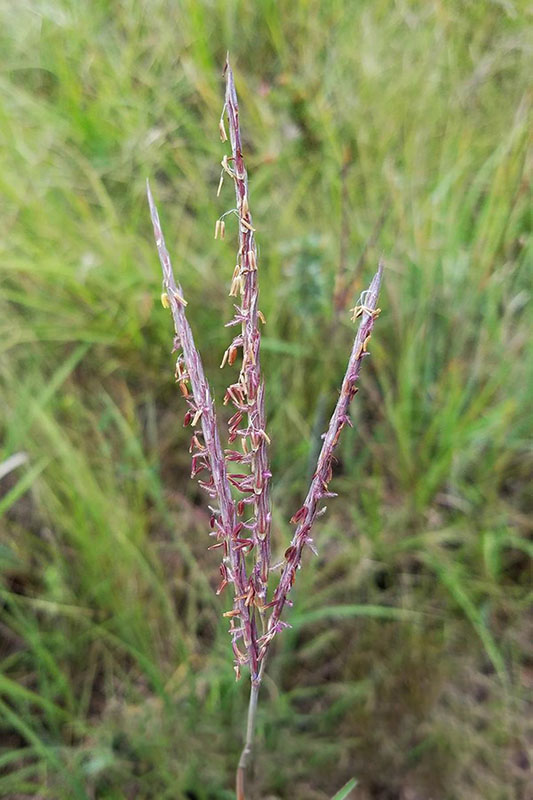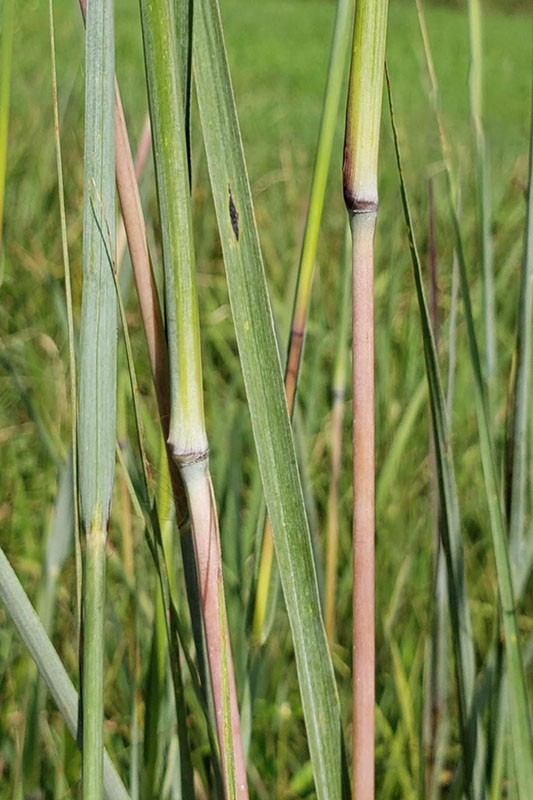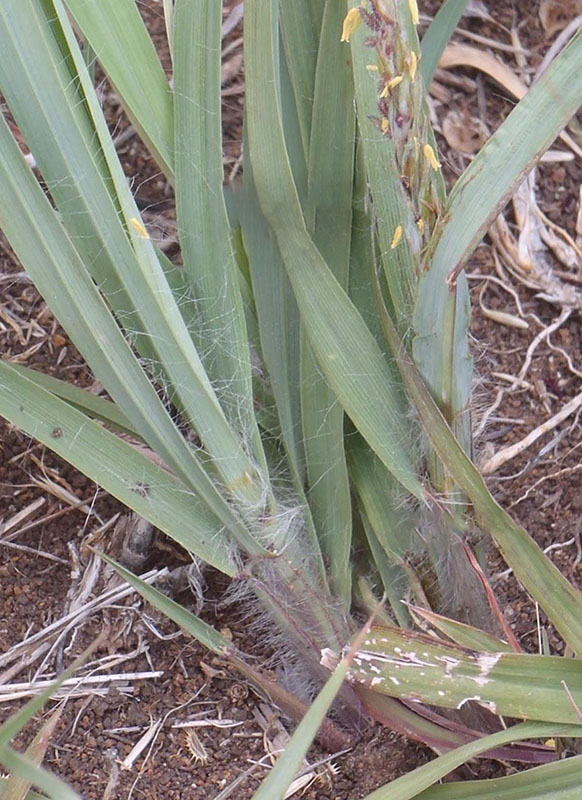Big Bluestem
| Plant Profile | |
|---|---|
| FYUSE 3D Image |
Common Name: Big Bluestem Other Names: Turkeyfoot, Sand Bluestem Species Name: Andropogon gerardii Plant Type: Grasses & Grass-like Family Name: Poaceae, Grass Family Tribe: Andropogoneae, Bluestem Tribe |
Examples of Big BluestemAndropogon gerardii
| Plant Facts | |
|---|---|
| Origin | Native |
| Duration | Perennial |
| Season | Warm |
| Distribution in the U.S. | Throughout the Great Plains from southern Manitoba and the Dakotas to Arizona, New Mexico and Northern Mexico |
| Distribution in Oklahoma | Across the state |
ID Characteristics
- Field Identification Characteristics
Vegetative
- Distinctive, tall bunch grass
- Hairy leaf blade edges and sheaths, leaf blade tapers at the base
- Nodes noticeable
Floral
- Large seed heads with 2-7 (usually 3) branches all attached at tip of stem
- Hairy spikelets
- Leaf and Stem Characteristics
- Plant Height: 100-250 centimeters
- Ligule Type: Ciliate or fimbriate-membranous
- Sheath: Glabrous or villous at lower nodes
- Leaves: Basal and cauline
- Floral Characteristics
- Inflorescence Type: Rame
- Florets Per Spikelet: 2
- Glumes: Equal
| Habitat/Ecology | |
|---|---|
| Soil Type | Clay and loam |
| Habitat | Tallgrass prairie |
| Successional Stage | Late |
| Uses/Management | |
|---|---|
| Grazing | Highly palatable and nutritious to many classes of livestock during spring and summer. Palatability is highest in new growth, decreasing as the grass dries. Palatability fair during the winter. Often preferred over other grasses on summer ranges. Nutritional value follows palatability. During spring and summer, forage quality is high, decreasing through the growing season. Protein content is between 14-15% in the summer, diving to between 5-7% in the fall. Hay in early to mid-summer. |
| Wildlife | Provides both food and cover for numerous wildlife species. It is at its most desirable in spring or early summer when it is still in early stages of growth. This is when it has its highest protein levels. As the plant matures, it becomes less palatable for most wildlife. By winter, big bluestem has fair palatability at best. It can provide forage for bison, elk, white-tailed deer (very early, green stages of growth) and pronghorn antelope. It can also provide forage for upland game birds, including greater prairie chicken and wild turkey. Larval food source for the common wood nymph butterfly and several species of skipper butterflies. Excellent protection and nesting for game birds all year long by itself or with other grasses, including greater prairie chicken, wild turkey, lesser prairie chicken, ring-necked pheasant, partridges, quail, dabbling ducks, the sedge wren and numerous other songbirds. |
Topics:





